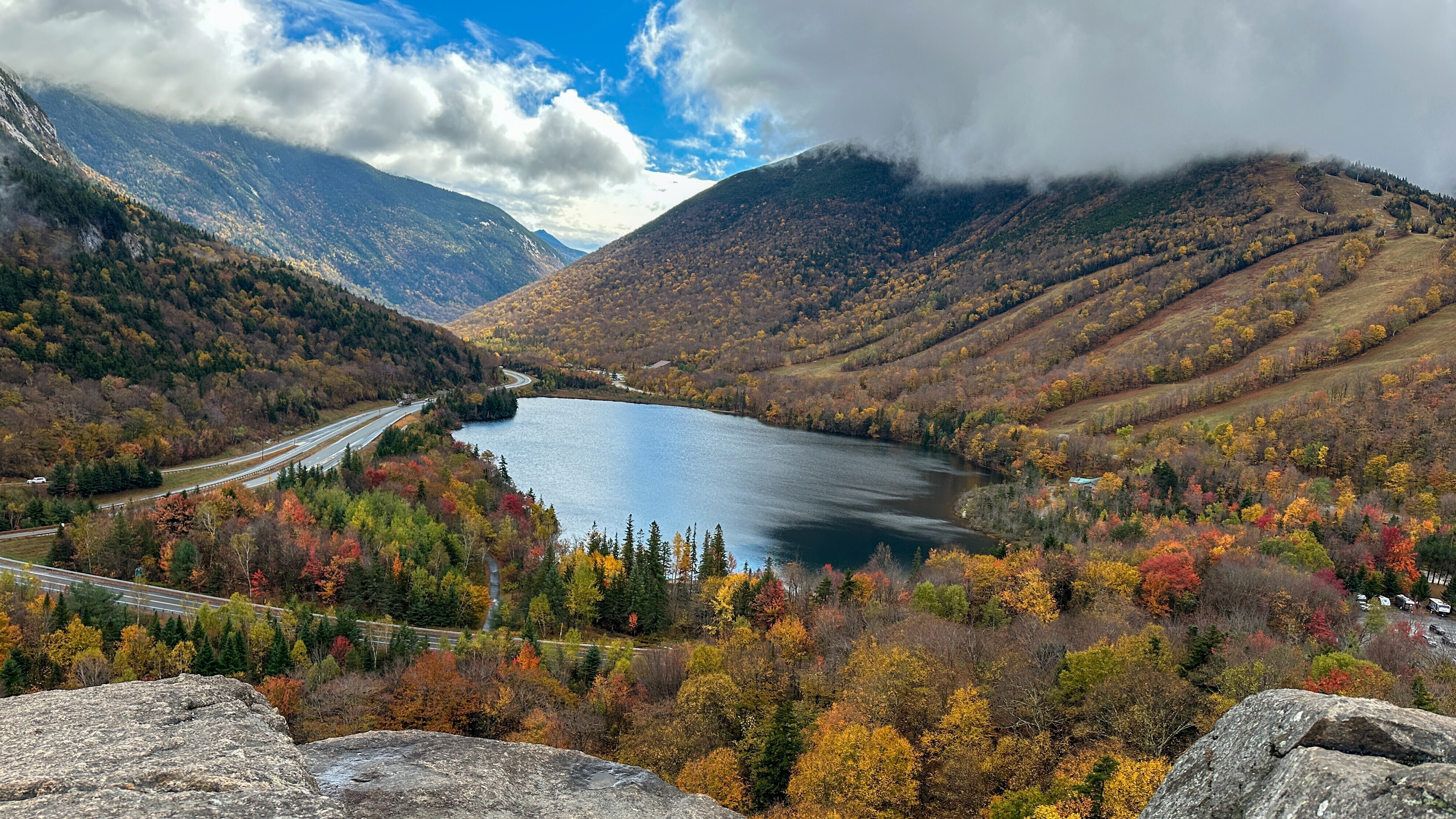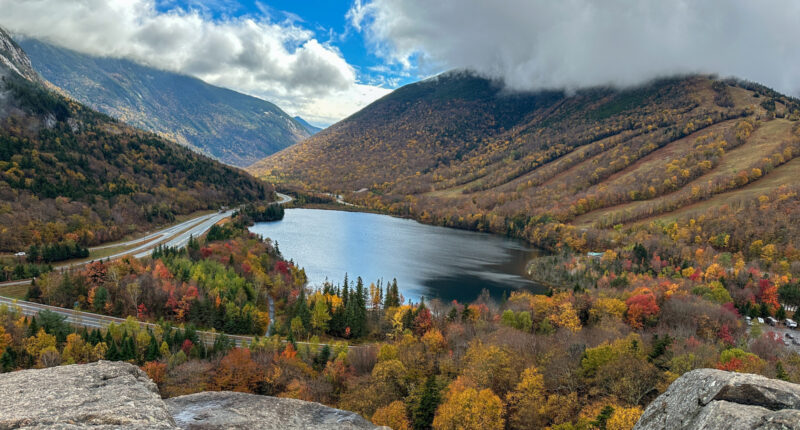Share this @internewscast.com
Leaf-peeping season has begun in the Northeast and beyond, but this year’s autumn colors are subdued due to weeks of drought, causing leaves to fall earlier than usual.
Enjoying the fall foliage is a yearly tradition in New England states, as well as in places like the Colorado Rockies, the Great Smoky Mountains of Tennessee and North Carolina, and Michigan’s Upper Peninsula. As days get shorter and temperatures decrease, the chlorophyll in leaves breaks down, revealing the yellow, orange, and red hues of autumn.
However, dry summer and fall conditions can affect this process, as a lack of water makes the leaves turn brown and drop faster. This is occurring this year since over 40% of the country was classified as being in drought in early October, according to the U.S. Drought Monitor.

This figure is over double the usual average, reported Brad Rippey, a meteorologist with the U.S. Department of Agriculture and an author of the drought monitor, a collaboration between the federal government and the University of Nebraska-Lincoln. The Northeast and western U.S. have been particularly impacted by the drought, he mentioned.
It all adds up to fewer leaves to peep.
“I think it might be a short and less vibrant season overall,” Rippey stated. “Some hillsides just won’t have the color this year.”
Fewer leaves, but many peepers
Despite the bleak outlook, autumn lovers say it’s still a wonderful time to explore nature’s colorful display. According to Andy Finton, a senior conservation ecologist with The Nature Conservancy in Massachusetts, there are still vibrant colors in New England’s trees.
Climate change is stressing forests with severe weather and heat waves, but autumn in New England remains a beautiful time of year to experience the wonderment of forest ecosystems firsthand, he said.
“Our trees and our forests have an inherent resilience,” Finton said. “They are still very resilient, and I am constantly surprised at how wonderful the fall season is despite these stresses.”
The tourism business built around leaf peeping has also proven resilient. At the Mills Falls Resort Collection at the Lake in Meredith, New Hampshire, general manager Barbara Beckwith said business is good at the four inns that have 170 rooms. The number of Canadian tourists is down, Beckwith acknowledged, but she said that has been made up with domestic leaf peepers, mostly from New England.
Beckwith said her properties were booked solid on weekends through mid-October and had been for weeks.
“This year is actually going to be better than last year,” Beckwith said. “Last year was an election and that put a lot of trepidation in people. Now, they are traveling. The uncertainty of the election is over. We all know whose president now and we are traveling.”
Chris Proulx, executive director of the Mount Washington Valley Chamber of Commerce, said the decline in Canadian tourists by as much as 80% seen this summer has continued into the fall. But the region is faring better, he said, thanks to an uptick in travelers from other countries and its reputation for having one of the country’s best leaf peeping seasons.
“This is the one season where people make plans in advance to come in addition to travelers from all of the country and all over the world,” Proulx said.
Muted show in the Rocky Mountains
Leaf peeping was so popular in Colorado’s Rocky Mountains this year that one town temporarily closed its highway offramp to alleviate gridlock. The area put on a display of yellow aspen trees dotting the mountains between evergreens, their delicate leaves vibrating in the wind.
But there were signs of a dry spring in the central part of the state, which was more severe the farther west you travel, said Colorado State Forest Service entomologist Dan West, who spends many fall days in a plane looking at how insect infestations are affecting tree health.
Crispy edges, muted colors, and dropping leaves before they can take on a red or purple hue are all signs of drought stress, West said.
“The tree is shutting down processes early and we basically just see this muted kind of a show for the fall,” he said.
In Denver, arborist Michael Sundberg also said he’s seeing less vibrant color than usual, and autumn feels like it arrived earlier than usual this year. It’s still a beautiful time of year, but there might be less of it to enjoy, he said.
“It’s weird to have color peaking this early in the mountains and then for Denver to be peaking at the same time,” he said. “Usually we’re later in October before we really go off.”
.

















